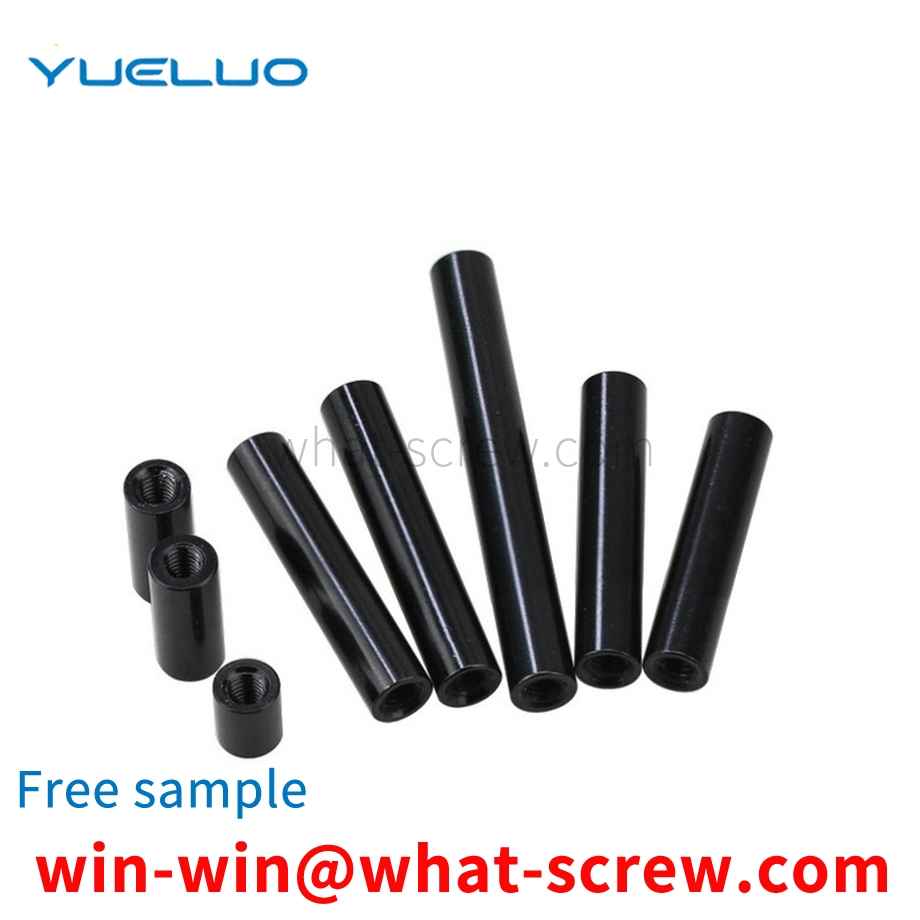3. Friction coefficient The friction angle is an important factor affecting the torque, and the existence of friction is the basis for the normal operation of the lock nut. When the lock nut is working, the contact surface has pressure and friction under the action of the elastic restoring force of the thread piece. During the repeated use, the rough position and edges and corners of the contact surface are ground and smoothed under the action of cyclic friction. The coefficient of friction becomes smaller, which in turn reduces the maximum unscrewing torque of the nut.
When using screws, if you can understand the mechanical properties of screws first, then you can use screws better. Different types of screws have different mechanical properties, and the different mechanical properties lead to different occasions when screws are used. 1. Self-tapping screws: mechanical performance requirements 1. Heart hardness: standard value HRC28-38. When testing, take the section 1-2 times the diameter of the name from the tail. If the length of the name is too short, it can be embedded first, and then the hardness is measured. 2. Surface hardness: standard MIN HV450. 3. Carburized layer: standard 4#-6#: 0.05-0.18mm, 8#-12#: 0.10-0.23 mm, 14#: 0.13-0.28 mm. The main purpose of carburizing is to enhance the surface hardness and ensure the strength of the teeth. If the decarburization is too deep and the carburization is insufficient, the strength of the teeth will not meet the requirements, that is, the teeth will be damaged during the screw-in test. 4. Torque: standard specification 4#5#6#7#8#10#12#14#A tooth 14212835455696145AB tooth 142128354565102165. 5. Screw-in test: screw the self-tapping screw into a steel plate with a reserved test hole. The self-tapping screw should form a matching thread in the test plate, and the thread of the screw itself will not be deformed or damaged until the end. Tapered threads pass completely through the test plate. The screw-in test is only applicable to AB, B, BP and other types of self-tapping screws. It is stipulated in IFI that the test plate shall be prepared from semi-hard low-carbon cold-rolled steel, and the hardness of the steel plate is 70–85HRB in Rockwell. The standard specification of the steel plate, that is, the thickness, is shown in the table below. The test hole should be punched or drilled, and the tolerance is the specified nominal diameter (see the table below) ± 0.025mm. Specifications 6#7#8#10#12#1/4 Test plate thickness (mm) 1.85-1.953.12-3.234.68-4.84 Aperture (mm) ±0.0252.953.263.454.044.765.50.
The hexagonal nut is used in conjunction with screws, bolts and screws to connect and fasten parts. Among them, the Type 1 six-purpose nut is the most widely used. The C-level nut is used for machines, equipment or structures with rough surface and low precision requirements; A-level and B-level nuts are used for relatively smooth surfaces and high precision requirements. machine, equipment or structure. The thickness M of the type 2 hexagon nut is thicker, and it is mostly used in occasions where assembly and disassembly are often required. The thickness M of the hexagonal thin nut is relatively thin, and it is mostly used in situations where the surface space of the connected parts is limited.
Inch Screws C-1: Thread Code: The denominator is marked as 8, and then the numerator is directly called the number. Ex: 1/8 x 0.50 –PPB: 1 Thread screw x 0.50” long, PPB Ex: 5/16 x 0.50 –PPB = 2.5/8 x 0.50-PPB : 2 ½ inch screw x 0.50” long, PPB Ex: 5/32 x 0.50 –PPB =1.25/8 x 0.50-PPB: 1 ½ ½ inch screw x 0.50” long , PPB Ex: 1/4 x 0.50-PPB= 2/8 x 0.50-PPB: 2-point screw x 0.50” long, PPB Note: Coarse or fine pitch is sometimes indicated. UNF: Fine pitch: more commonly used in the electronics industry UNC: Coarse Thread: More commonly used for heavy machinery construction. Ex: 3/8 x 0.50, UNF –PPB: 3 point fine thread screw x 0.50” long, PPB. C-2: Length Code: In inches, must be multiplied by 25.40 is converted to mm. Measured with a buckle gauge, it is a metric thread when it matches the metric thread, and an inch thread when it matches the inch thread. You can also use a caliper to measure the outer diameter and pitch of the thread. The outer diameter of the metric thread is in millimeters, Such as 6, 8, 10, 12, 18, 20 mm, etc., the pitch is also in millimeters, such as 0.5, 0.75, 1, 1.5, 2, 3, etc. The outer diameter of the imperial thread is in inches, (per inch Equal to 25.4 mm) such as 3/16, 5/8, 1/4, 1/2, etc. Therefore, the reading of the outer diameter with a metric caliper often has irregular decimals. The inch pitch is expressed by how many teeth per inch. Set the caliper at 25.4 mm, align one caliper tip with the thread cusp, and the other caliper tip, if aligned with the thread cusp, is an inch thread, and if the thread cusp is not aligned, it should be a metric thread. The tip is printed on the white chalk. The chalk is clear and easy to measure. To measure the metric pitch, you should measure a length, such as 10, 15, 20, millimeters, etc., count how many teeth are included, and calculate the pitch in inches. The specified thread specification is inch thread, such as: G1. Metric threads are specified in metric units of millimeters. Such as: M30. The imperial system is determined by how many teeth there are in one inch (2.54 cm), generally a 55-degree angle. The metric system is the pitch determined by the distance between the two tooth tips, usually a 60-degree angle anchor screw: tighten the machine, etc. Screws for use on the ground. Also called anchor bolts. The difference between British and American screws is difficult to distinguish visually. The difference between British and American screws is that the rolling angle of British screws is 55 degrees, while the rolling angle of American screws is 60 degrees. These two standard screws are used in most screws. It can be used in general, but 1/2 size screws are not allowed, because the standard thread of inch 1/2 is 1/2-12 teeth, while the American system is 1/2-13 teeth.
In the design of modern aviation and aerospace vehicles, in order to reduce weight and save space, the space of the fastening installation system is getting narrower and narrower, and blind hole installation is often required. In this case, single-sided riveting installation is usually used for fastening connection. At present, this kind of fastening connection products are mainly blind rivets. The riveting installation principle of blind rivets is to use the method of pulling, pulling the mandrel, and extruding the nail sleeve to deform it at the blind end to achieve the function of fastened connection. This kind of fastening connection method requires special riveting, generally imported riveting, the replacement of internal parts is expensive, the installation process is complicated, and the installation cost is high.
We have many years of experience in the production and sales of screws, nuts, flat washers, etc. The main products are: threaded pin positioning pins, 10.9 fishtail bolts, cotter pin hollow pins, plastic hand-tightened nuts and other products, we can provide you with suitable products Your fastener solution.



















 Service Hotline
Service Hotline




